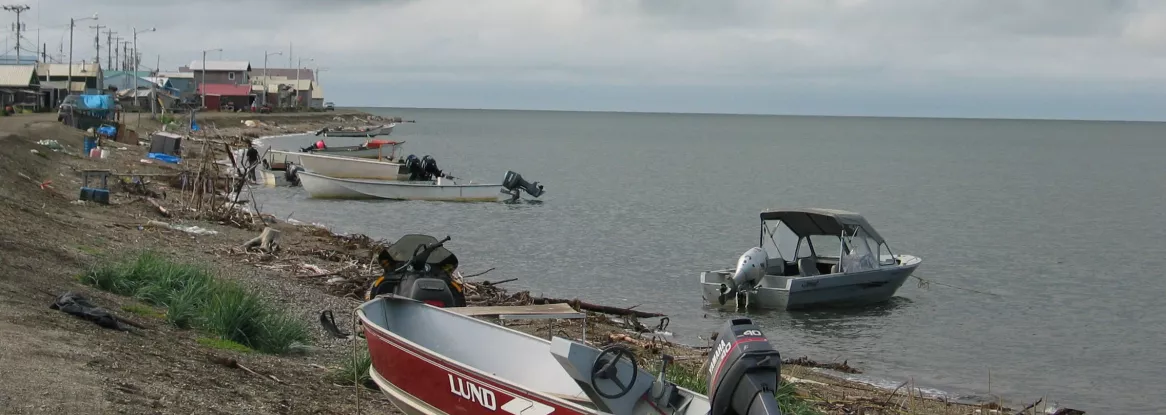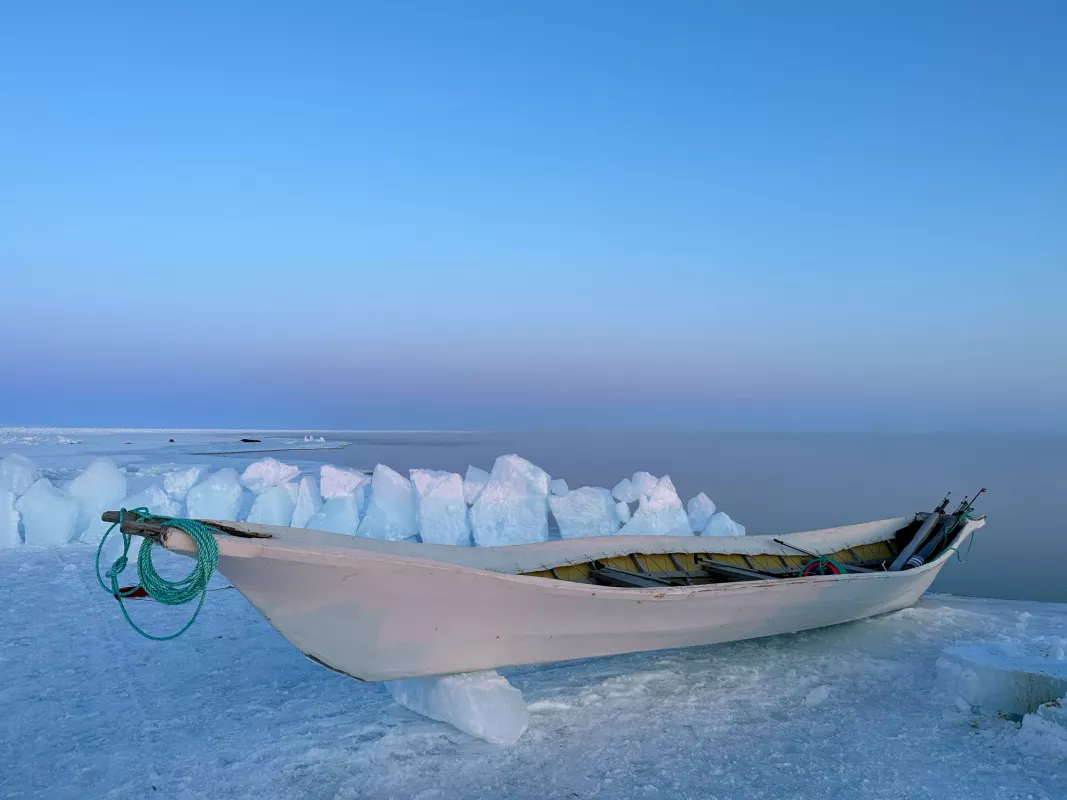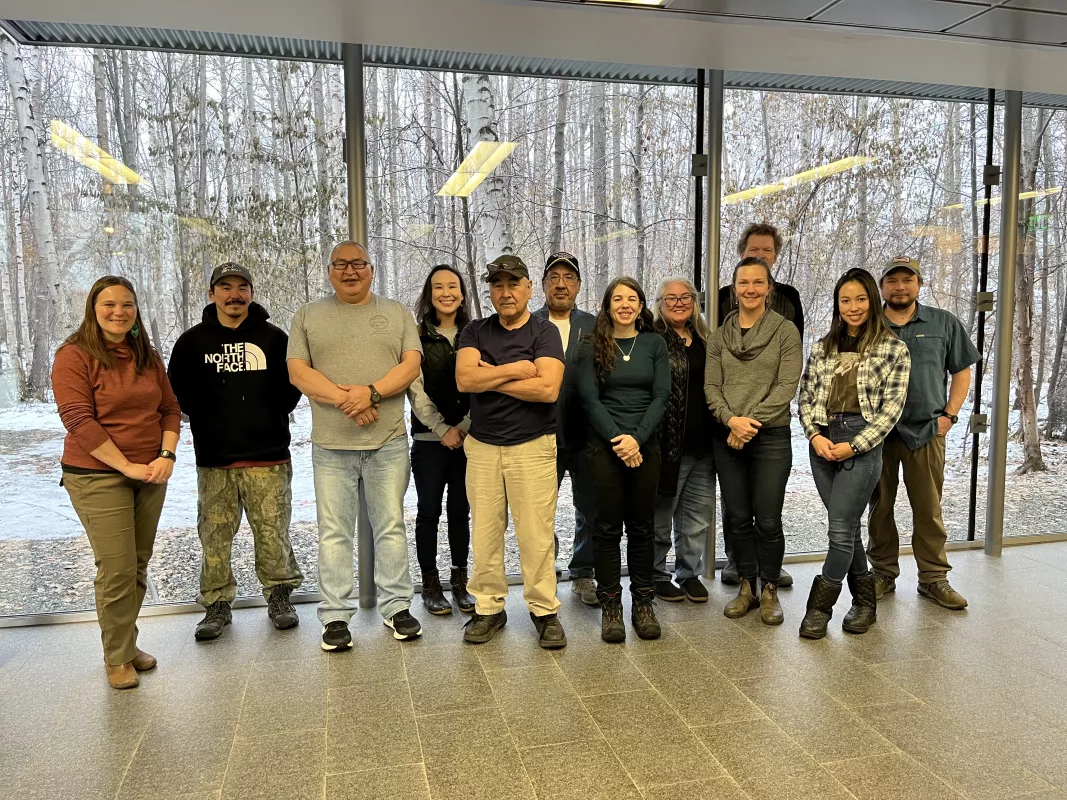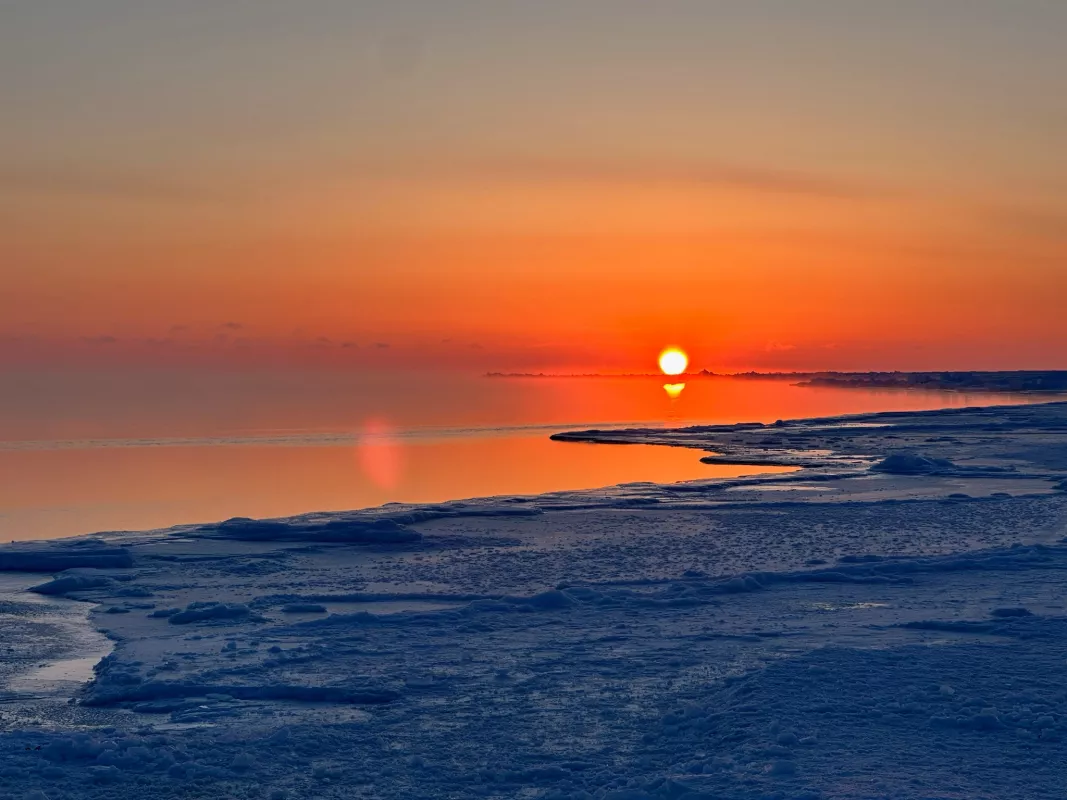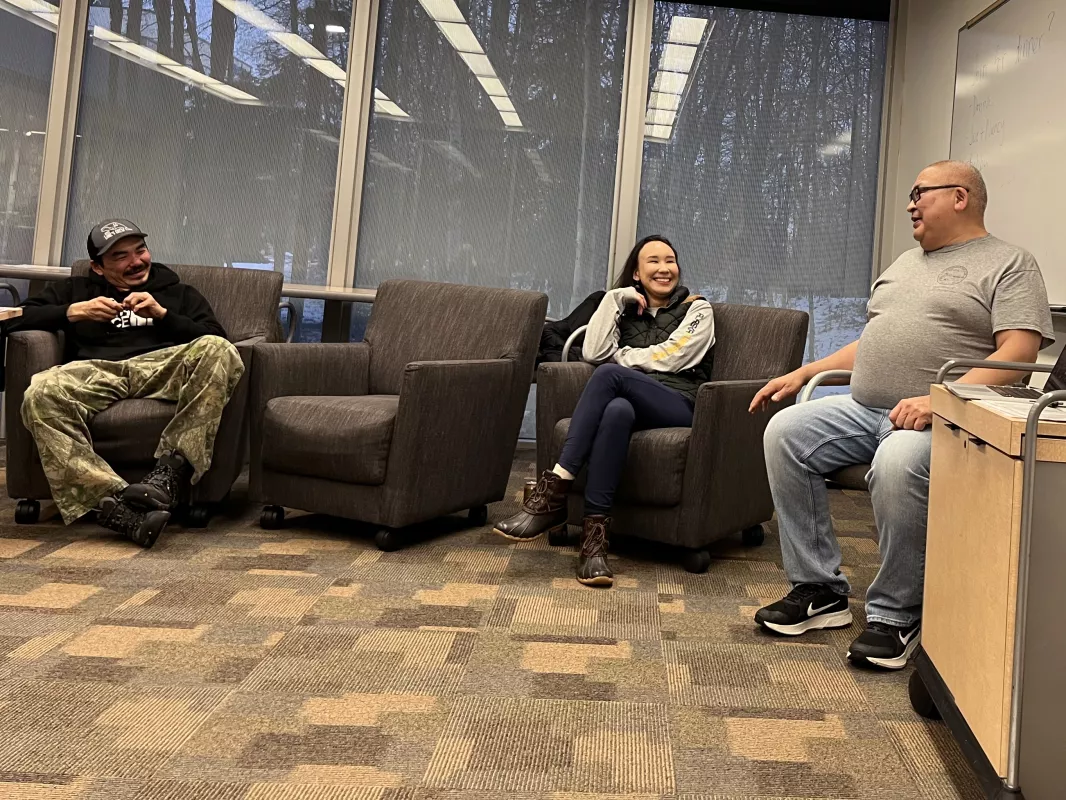By Agnieszka Gautier
When Roberta Tuurraq Glenn recalls speaking with Alaskan Native Elders, she lights up. “I feel lucky,” she says. “To be involved in an organization that is seeking guidance from Indigenous Elders really sits well with me.” Glenn works as a Project Coordinator and Community Liaison for the Alaska Arctic Observatory and Knowledge Hub (AAOKH), which has partnered with the Exchange for Local Observations and Knowledge of the Arctic (ELOKA) to support an online community-led observational data hub. Glenn is from Utqiaġvik, Alaska, and grew up knowing the Elders she now turns to for guidance.
In the time of a rapidly changing Arctic, working with local communities who have ancestorial ties and knowledge to the land may benefit global understanding of climate change, its impacts, and how to best mitigate for a different environmental future. “The more we collectively know and understand, the better we are able to make informed decisions,” Glenn said. Working with communities takes time, resources, and patience, as the AAOKH project demonstrates, but a shift is needed in science to include community voices and observations to widen and deepen our collective breadth of knowledge.
The Local Observation hub that hosts observations from AAOKH is one of ELOKA’s oldest data products. It bears witness to Arctic change, is a resource for communities, and provides data for scientists, resource managers, and policymakers. Beginning in 2006, Indigenous Iñupiaq and Yup'ik sea ice experts along the northern and western coasts of Alaska began recording their observations of sea ice, wildlife, and weather, sending them to researchers at the University of Alaska Fairbanks, who would add them to the online platform. The project grew from its first stage as the Seasonal Ice Zone Observing Network (SIZONet) to later become a component of AAOKH.
The city of Utqiaġvik was always part of the hub, but the geographical scope eventually broadened to include northwestern Alaska and the North Slope with communities like Kotzebue, Point Hope, Wainwright, and Kaktovik also contributing their observations.
One foot here, one foot there
In November 2022, for the first time in years, the community observers from AAOKH met in person to discuss the project and its future. Glenn facilitated that meeting, while the ELOKA team joined the meeting remotely, asking discussion-provoking questions regarding the purpose and goal of the product. Glenn is grounded by place and culture with the added experience of getting her master's at the University of Fairbanks Alaska. “Having a facilitator who can go between the communities and tribes and the scientists is key,” said Donna Hauser, a trained marine biologist and the science lead of AAOKH, about Glenn’s position on AAOKH. “Having that capacity with Roberta within our organization has been really important.”
Glenn understands firsthand the tensions that can arise between Indigenous Knowledge and science. “I’m navigating between two worlds—the community I grew up in and academia,” Glenn said. As an example, she points out that the terms that academics use to describe aspects of her identity do not always align with the terms people use back home. “I never used ‘Indigenous’ until I got to school,” she said. “I’m Native. I’m Iñupiaq. When I’m in the lower 48, I’m sometimes Inuit. But learning to use the term Indigenous was an adjustment.”
Though science and Indigenous Knowledge do not always align, there is growing recognition of the important insights that Indigenous Knowledge can contribute to research and policy. On November 30, 2022, the White House released a guidance document to ensure federal agencies include Indigenous Knowledge to inform federal research, policy, management, and decision making.
Hauser agrees that a shift in science is starting to take hold. “From the AAOKH perspective,” she said, “we have a unique opportunity to bring back these long-term community data, this Indigenous Knowledge that is by the community and for the community.”
Arctic coastal communities have a long history in the oral tradition, which Western science and policymakers have not always utilized or turned to as a form of creditable information. “These are the people at the frontlines of Arctic change. They’re seeing it firsthand,” Hauser said.
For instance, Arctic Indigenous Peoples have noticed the ocean is freezing later in the fall. They see that sea ice is melting earlier, and that some years, sea ice barely forms in certain areas. Shorefast ice, the ice that clings to the shore, is less stable. Sea ice is thinning, with less thick multiyear ice lingering. Overall, environmental conditions are less predictable.
Community voices offer an anchor of long-term observations and knowledge, but these voices also look to the future. As Joe Leavitt, a longtime observer in Utqiaġvik, was quoted in AAOKH’s recent newsletter, “I hope in the future, AAOKH is used by younger generations. The observations should be used by future hunters too. Because right now we see lots of changes in our time. [All our information] has to be set up so we can share [it] with those people.”
An evolving data product
Until the 2022 meeting, ELOKA and AAOKH had not revisited the design of the observation hub or the way that users of the hub are encouraged to interpret the data since its initial development.
At the meeting, the AAOKH team went back and forth with the observers, asking questions like: What communities do you want to engage with the site? Are there audiences you may have concerns about? How can we make the database better? And is anything missing from the original user agreement? Three major concerns arose.
First, the observers do not want to be liable for an inaccurate or incomplete observation. So, a sentence was added within the introduction of the data use agreement to emphasize that the observations may not reflect all the environmental conditions.
The second issue was regarding audience. Though the communities want their data to be more usable and accessible, they worry about who may be using their information, especially when individuals or organizations do not fully understand the long and traditional practice of whaling, hunting, or fishing. For instance, the bowhead whale is federally protected under the Endangered Species Act, but some people may not be aware that the hunt is co-managed with a quota for Alaska Native communities. In a place where a gallon of milk sells for $10, hunting is vital for putting food on the table, but it is also a form of identity to a cultural tradition. Glenn added, “Folks are really sensitive about making sure we aren’t putting ourselves in a position where we will have to defend our way of life.”
Finally, the citations needed an update. “In science, it’s all about individual credit and proper citations,” Glenn said. Originally the citations listed every observer, but after being online for nearly 20 years, the observers decided that they did not want to be individually named—just to be known as the “Observers of Arctic Alaska.” They wanted to be inclusive. “They don’t just want to highlight themselves,” Glenn said. “They see each other as a team.”
Bridging two perspectives
When Glenn describes her conversations with the Elders, she gets animated, describing their broad approach to presenting information. “They don’t talk like scientists, who often focus on one discipline,” Glenn said. “They are storytellers, and there are no binaries in storytelling. There’s no compartmentalized thinking. It’s all happening at the same time.” They talk about whaling in relation to sea ice and the ecosystem and the regulators and the government agencies that are trying to manage populations. Everything is interconnected. “In that way, it’s been eye opening,” Glenn said. “Their breadth of knowledge and the way they share it with humor has been awesome, and not something that I expected to be so moved by.”
The question remains of process. How can quantitative data be bridged with observational, multifaceted, and sometimes nuanced knowledge?
Hauser emphasizes the importance of weaving Indigenous Knowledge with community-led priorities and with the tools and services from science. “The thing we need to think about as scientists and practitioners is that it really is a matter of weaving these knowledge systems, rather than integrating, because with integration, someone is getting subsumed by someone else. There is always a power dynamic,” she said. For tribes and communities, with their complicated and sometimes antagonistic history with governments and universities, rebuilding trust in these institutions will take time and hard work.
But the work can make a difference in terms of Indigenous-led co-management or tribal climate adaption plans. “Thinking how these observations can be used on the local level is pretty exciting even if it is hard work to do as an academic,” Hauser said. “It’s one of the best parts of my job. When it comes to community work, writing a paper and going through the peer review process isn’t necessarily what is most important.”
Taking the time to build relationships is meaningful for Hauser. Through daily interactions with their natural surroundings, community members harness a knowledge that provides context for scientific data. For instance, a satellite image can show where sea ice has opened in Kotzebue Sound. But the locals already know that there is open water not too far from shore just by how the sky looks. “Weaving this information is powerful,” she added.
One outcome of Glenn’s thesis, which she completed in 2022 and calls a Story Map, Insights from Coastal Arctic Indigenous Observers, offers an example of what happens when science and Indigenous Knowledge are woven together. “I wanted to be able to tell a story with the observations rather than just presenting the observations themselves and the instrumental data,” she said. The website presents a collection of photos, observations, instrumental data, recorded conversations, and historical data. “I pulled together different types of knowledge systems to tell a story,” Glenn said. In much the same way that Glenn described how Elders spoke to her, she speaks to the world, weaving the language of the Elders she grew up listening to with the academic voices of her scientific background.
“That’s the best we can do,” Glenn adds. “We need to listen to each other patiently and respectfully. That is my job, and the job is to find the way to bridge these worlds.”
